SLVSDE7D November 2016 – December 2023 TPS22976
PRODUCTION DATA
- 1
- 1 Features
- 2 Applications
- 3 Description
- 4 Device Comparison Table
- 5 Pin Configuration and Functions
-
6 Specifications
- 6.1 Absolute Maximum Ratings
- 6.2 ESD Ratings
- 6.3 Recommended Operating Conditions
- 6.4 Thermal Information
- 6.5 Electrical Characteristics (VBIAS = 5V)
- 6.6 Electrical Characteristics (VBIAS = 2.5V)
- 6.7 Switching Characteristics (TPS22976)
- 6.8 Switching Characteristics (TPS22976A)
- 6.9 Switching Characteristics (TPS22976N)
- 6.10 Typical DC Characteristics
- 6.11 Typical AC Characteristics
- 7 Parameter Measurement Information
- 8 Detailed Description
- 9 Application and Implementation
- 10Device and Documentation Support
- 11Revision History
- 12Mechanical, Packaging, and Orderable Information
Package Options
Refer to the PDF data sheet for device specific package drawings
Mechanical Data (Package|Pins)
- DPU|14
Thermal pad, mechanical data (Package|Pins)
- DPU|14
Orderable Information
6.10 Typical DC Characteristics
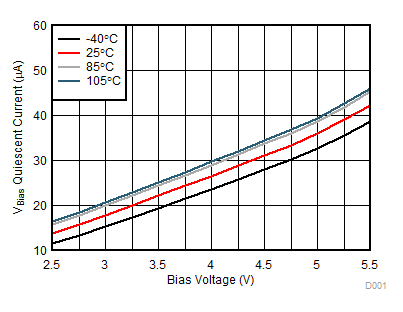
| VIN1 = VIN2 = VBIAS | VON1 = VON2 = 5 V | VOUT = Open |
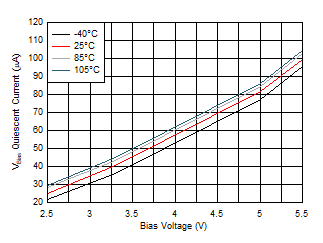
| VIN1 = VIN2 = VBIAS | VON1 = VON2 = 5 V | VOUT = Open |
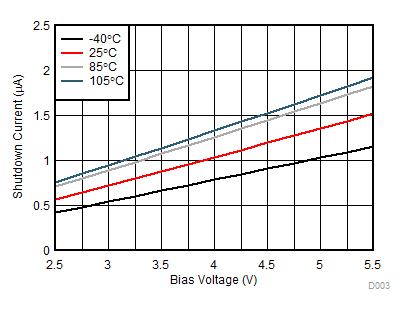
| VIN1 = VIN2 = VBIAS | VON1 = VON2 = 0 V | VOUT = 0 V |

| VBIAS = 5 V | IOUT = –200 mA | VON = 5 V |

| VBIAS = 5 V | IOUT = –200 mA | VON = 5 V |
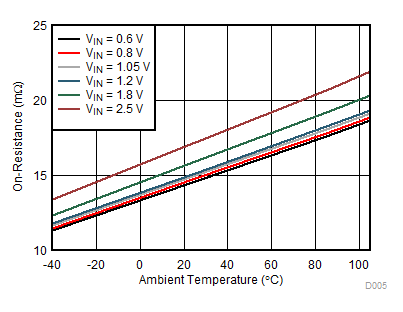
| VBIAS = 2.5 V | IOUT = –200 mA | VON = 5 V |
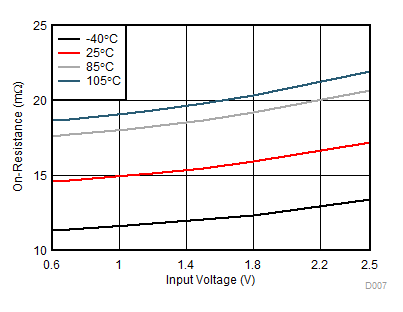
| VBIAS = 2.5 V | IOUT = –200 mA | VON = 5 V |
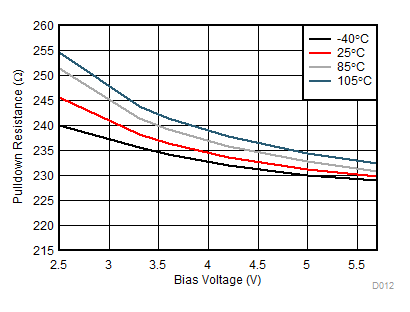
| VIN = 2.5 V | VON = 0 V |
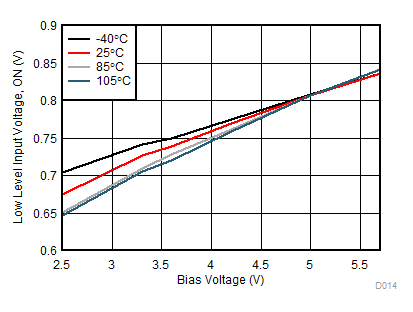
| VIN = VBIAS |
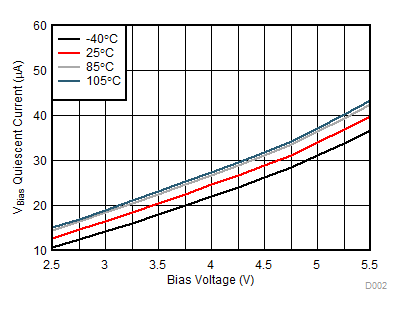
| VIN1 = VBIAS | VON1 = 5 V | VOUT = Open |
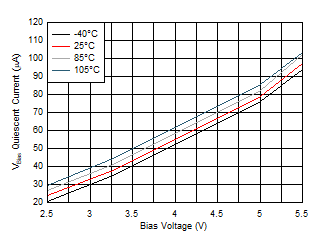
| VIN1 = VBIAS | VON1 = 5 V | VOUT = Open |
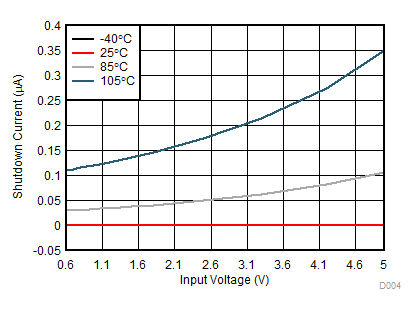
| VBIAS = 5 V | VON = 0 V | VOUT = 0 V |
| Note: | –40°C and 25°C curves have similar values, therefore only one line is visible. | |

| VBIAS = 2.5 V | IOUT = –200 mA | VON = 5 V |

| VBIAS = 2.5 V | IOUT = –200 mA | VON = 5 V |
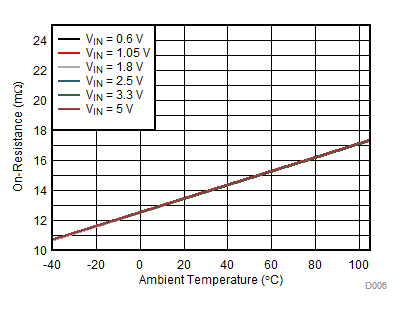
| VBIAS = 5 V | IOUT = –200 mA | VON = 5 V |
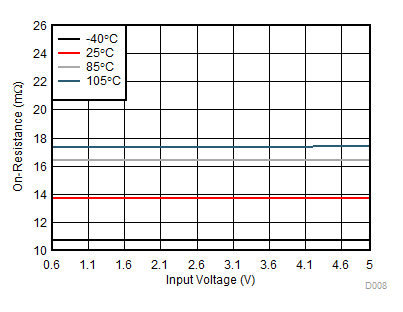
| VBIAS = 5 V | IOUT = –200 mA | VON = 5 V |
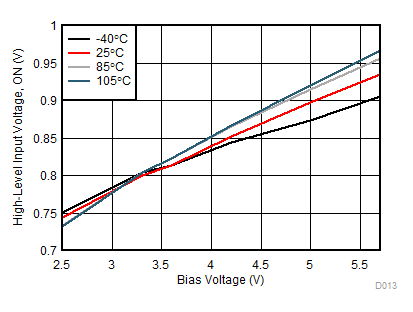
| VIN = VBIAS |
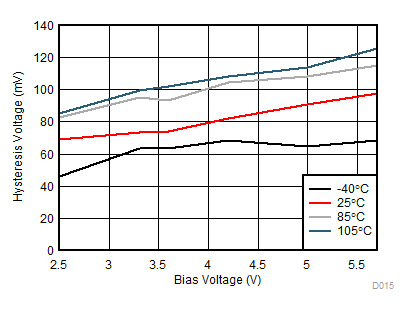
| VIN = VBIAS |